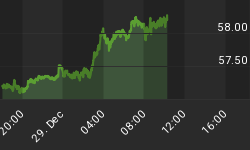In spite of alleged strength in several recent regional manufacturing reports, durable goods orders took another nosedive. As I have commented, there are lots of problems with small-sample diffusion reports that likely overstate the bounces we have seen.
Today's more sobering news is that durable goods orders are down 2.8%, pretty much in-line with the Econoday Consensus Estimate of -3.0%.
Durable Goods Orders

Highlights
The manufacturing component of the industrial production report pointed to February strength but the durable goods report certainty isn't. Orders fell 2.8 percent with the ex-transportation reading, which excludes the up-and-down swings of aircraft orders, down a very sizable 1.0 percent. And capital goods readings, which offer indications on business investment, are once again in the minus column, down 1.8 percent for orders and, in a reading that will pull down first-quarter GDP estimates, were down 1.1 percent for shipments.
Total shipments fell a very sharp 0.9 percent with unfilled orders also very weak, at minus 0.4 percent in a reading that is not promising for manufacturing employment. Inventories, at minus 0.3 percent, are coming down but not fast enough with the inventory-to-shipments ratio up one notch to 1.65.
A positive is that year-on-year rates, benefiting from easy comparisons against the even sharper declines this time last year, are improving. Total orders are up 1.8 percent year-on-year with ex-transportation down 0.5 percent for the best readings since the 2014 collapse in oil prices and declines in energy equipment first hit the sector.
This report is always volatile and the weakness in February does follow even greater strength in January, but January now looks like an odd outlier for a sector that, up until last month at least, has been struggling with weak exports and weak demand for energy equipment.
Recent History
Indications on the factory sector had been weak going into 2016 but the manufacturing component of the industrial production report showed life in both January and February while durable goods orders showed broad gains in January. But forecasters do not see durable orders extending the improvement in February with the consensus at minus 3.0 percent and at minus 0.2 percent for ex-transportation orders. Core capital goods orders did bounce back solidly in January but a resumption of weakening is the call for February, weakening that could lower expectations for first-quarter business investment. Even if the report does prove weak, the ongoing decline in the dollar points to a lift ahead for exports.
Comments on the Comments
That was surprisingly balanced reporting. Econoday even noted the easy comparisons allowing year-over-year numbers to rise as well as the potential for January to be nothing more than an outlier.
Is someone reading my comments on their comments by any chance?
That said, I do question the wisdom of this Econoday statement from their Recent History, ahead of the report: "Even if the report does prove weak, the ongoing decline in the dollar points to a lift ahead for exports."
Let's investigate that claim with a picture.
Spotlight on the Dollar

The US dollar index rose from 80 to just over 100 since mid-2014. That's an approximate rise of about 25%. From the very peak, the US dollar index is down just over 4%.
Will that provide a meaningful lift to exports?
I suggest no, especially in light of a clearly slowing global economy.
For a look at regional reports and diffusion indices please see Richmond Fed Manufacturing Activity Jumps Most Since April 2010, Biggest Change in 23 Years; What's Going On?
















